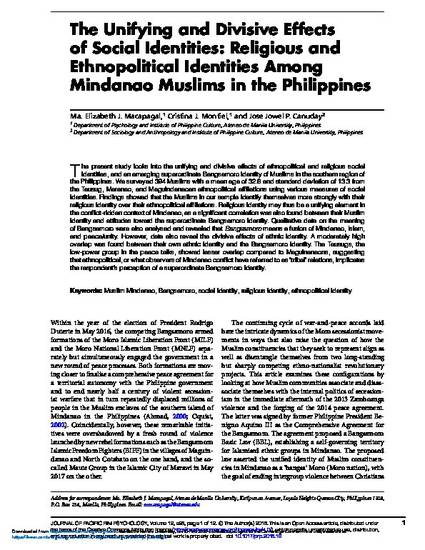
The present study looks into the unifying and divisive effects of ethnopolitical and religious social identities, and an emerging superordinate Bangsamoro identity of Muslims in the southern region of the Philippines. We surveyed 394 Muslims with a mean age of 32.6 and standard deviation of 13.3 from the Tausug, Maranao, and Maguindanaoan ethnopolitical affiliations using various measures of social identities. Findings showed that the Muslims in our sample identify themselves more strongly with their religious identity over their ethnopolitical affiliations. Religious identity may thus be a unifying element in the conflict-ridden context of Mindanao, as a significant correlation was also found between their Muslim identity and attitudes toward the superordinate Bangsamoro identity. Qualitative data on the meaning of Bangsamoro were also analysed and revealed that Bangsamoro means a fusion of Mindanao, Islam, and peace/unity. However, data also reveal the divisive effects of ethnic identity. A moderately high overlap was found between their own ethnic identity and the Bangsamoro identity. The Tausugs, the low-power group in the peace talks, showed lesser overlap compared to Maguinanaons, suggesting that ethnopolitical, or what observers of Mindanao conflict have referred to as ‘tribal’ relations, implicates the respondent's perception of a superordinate Bangsamoro identity.
